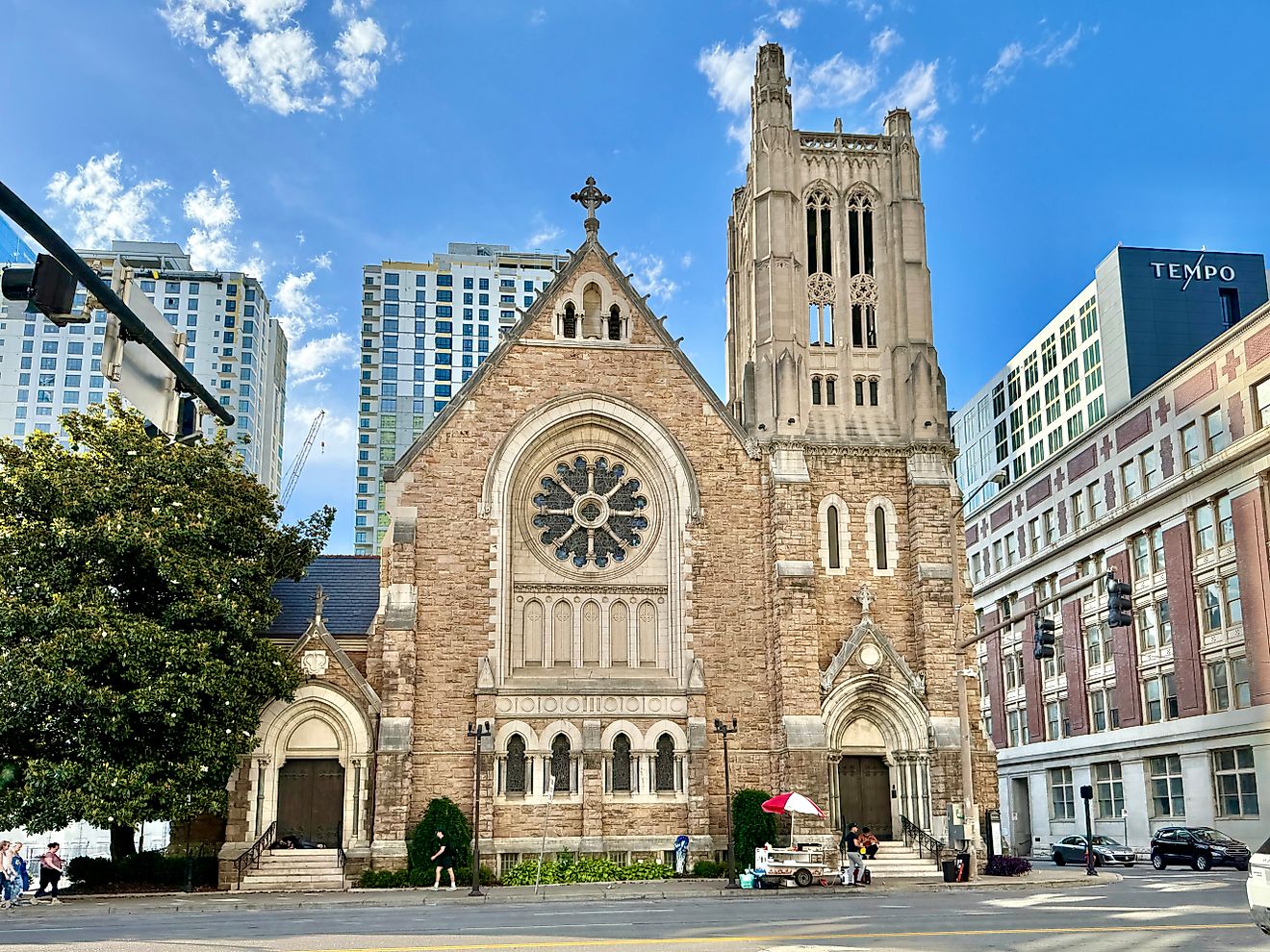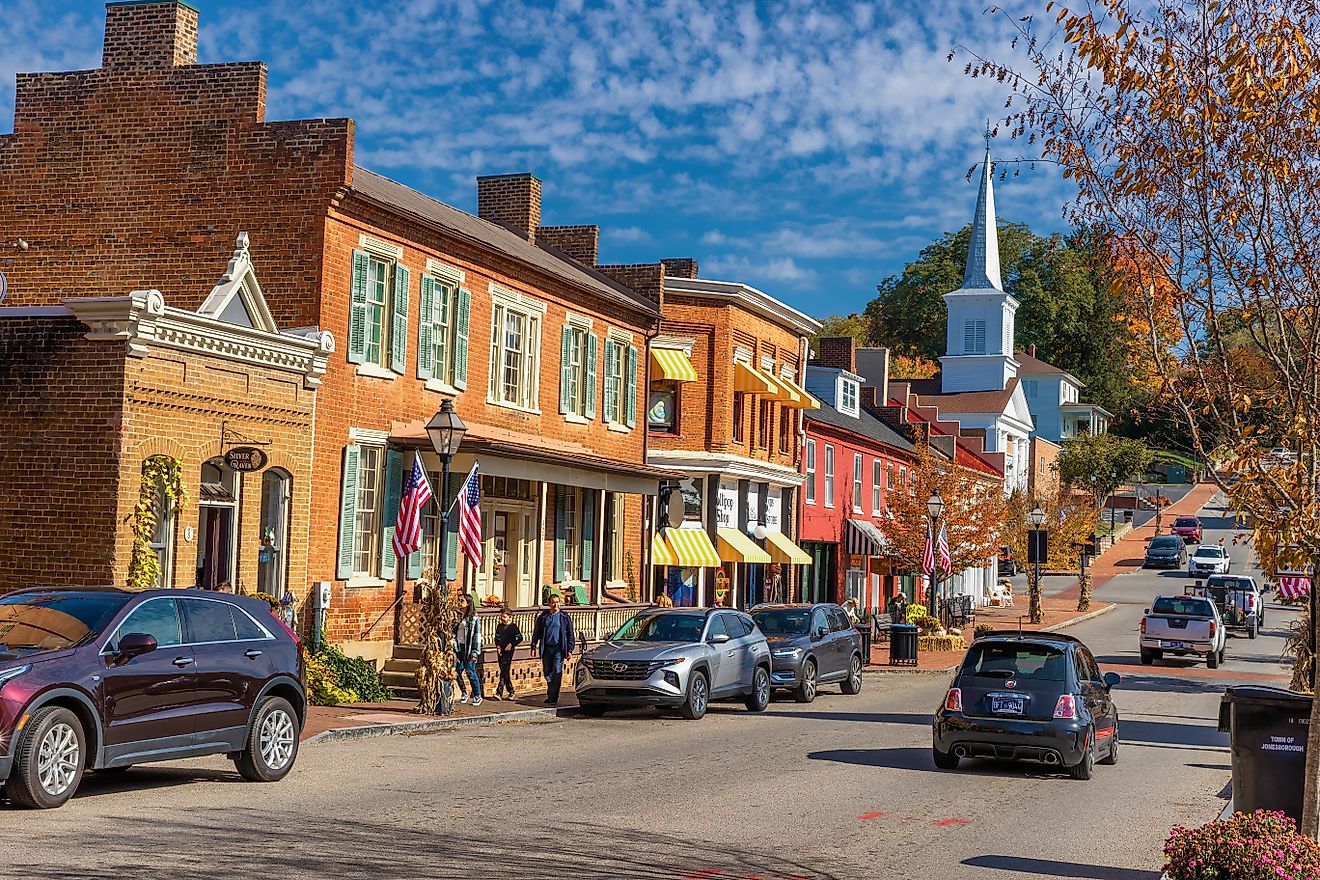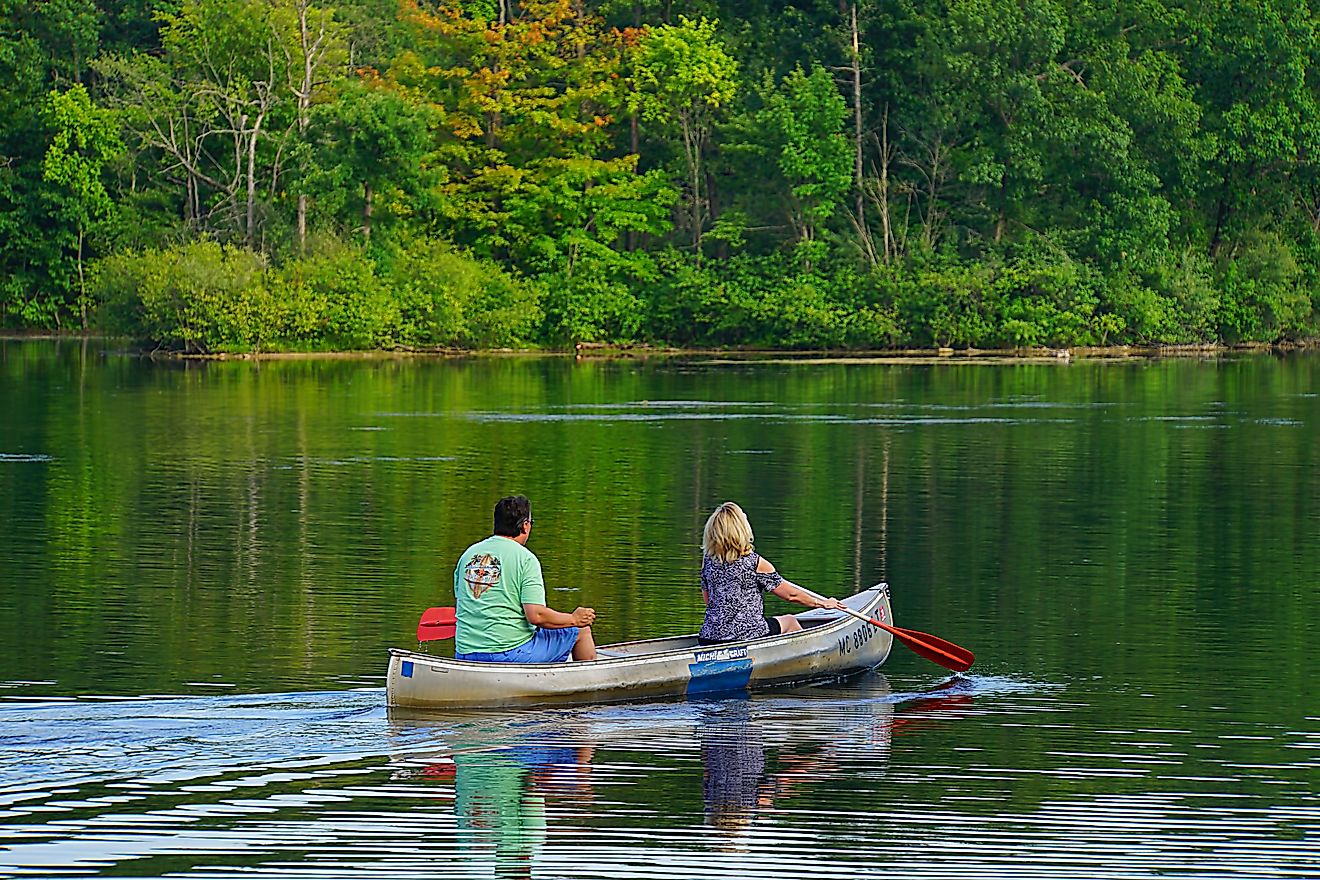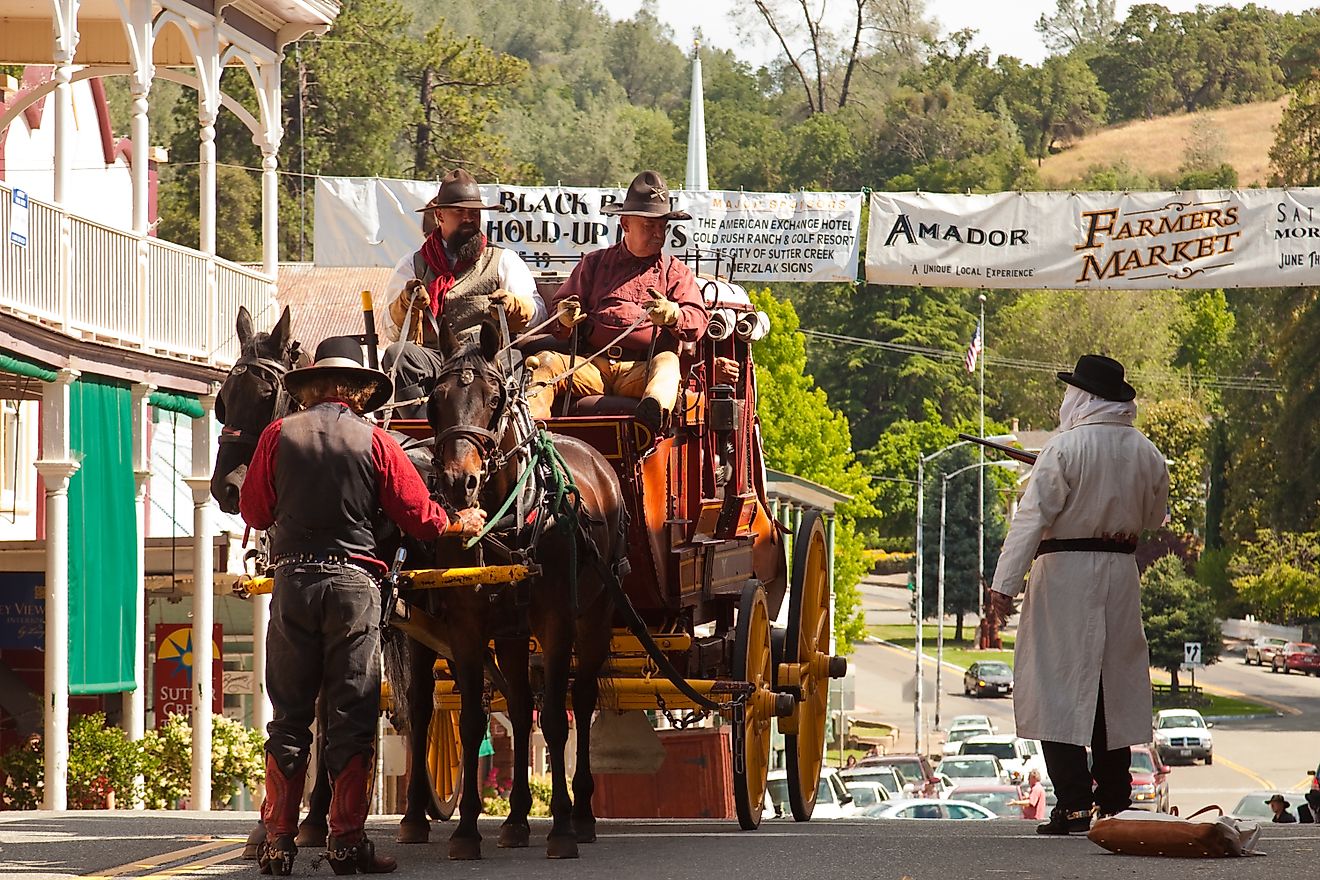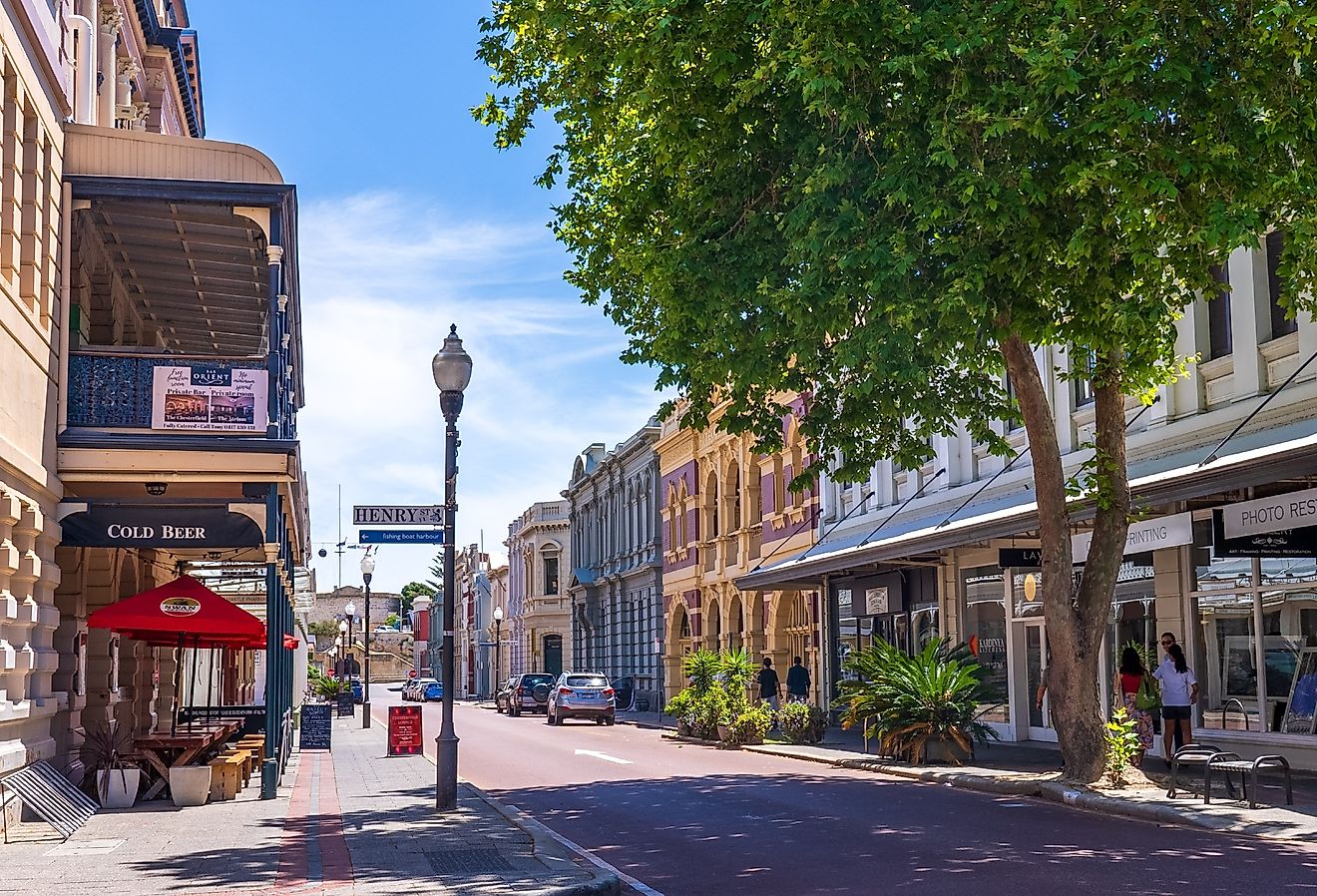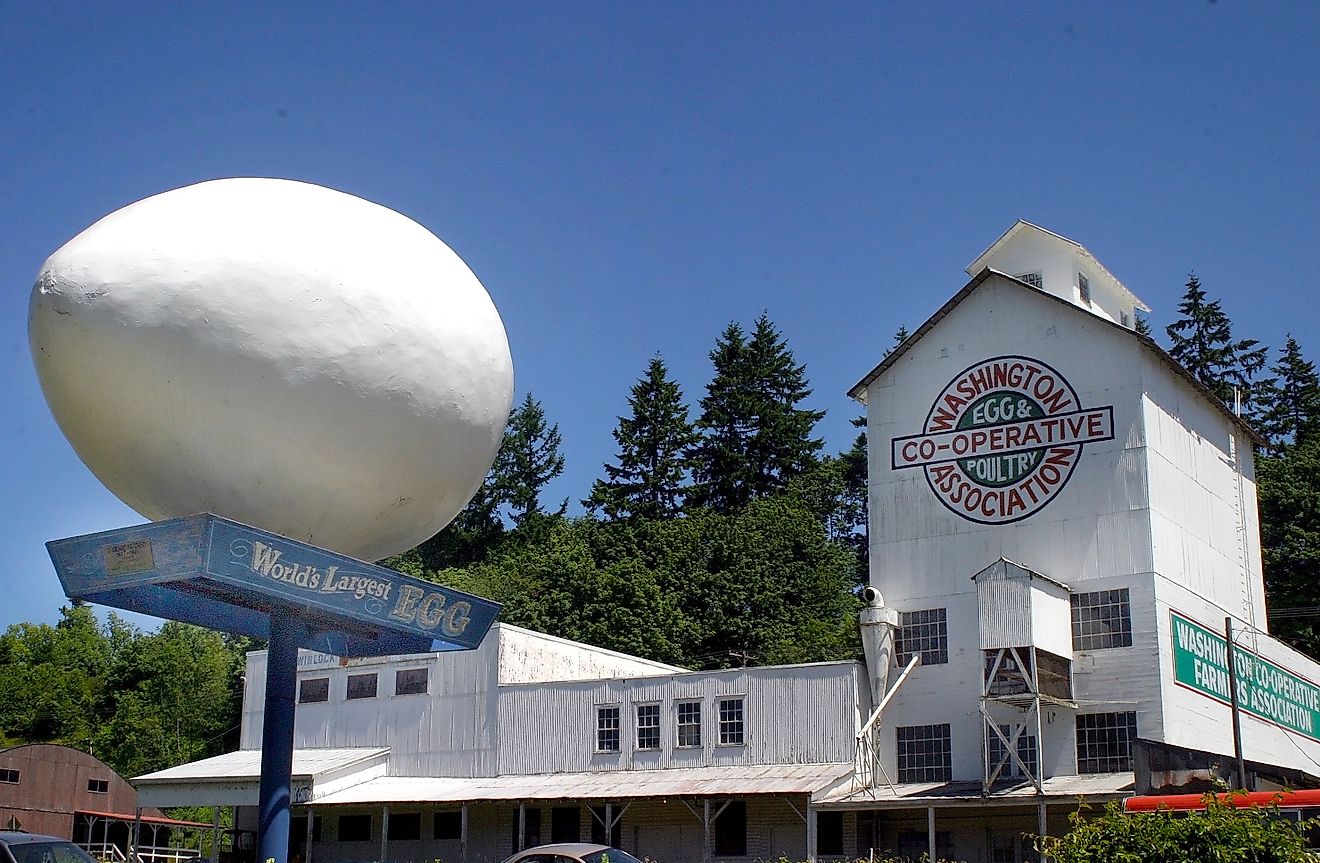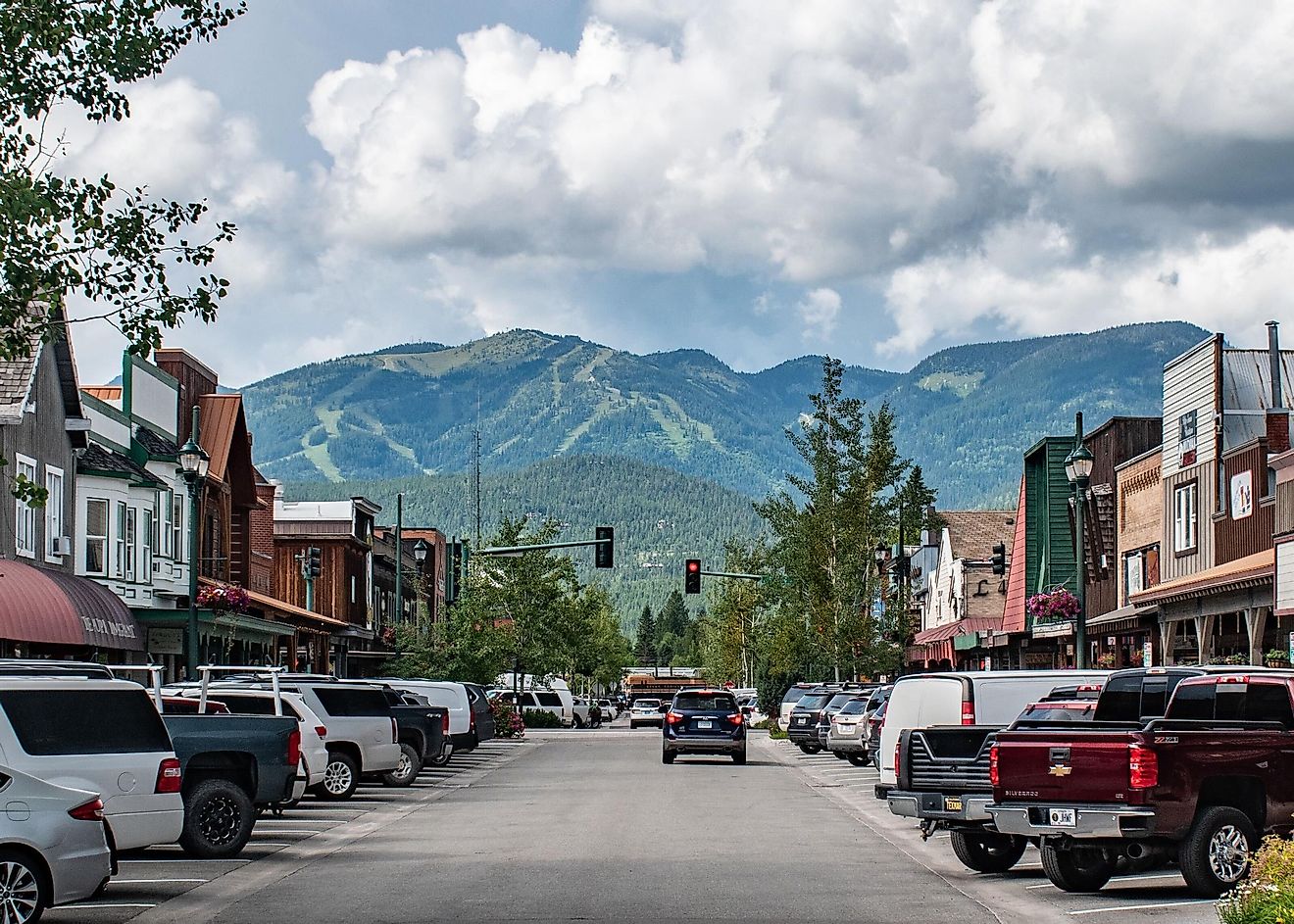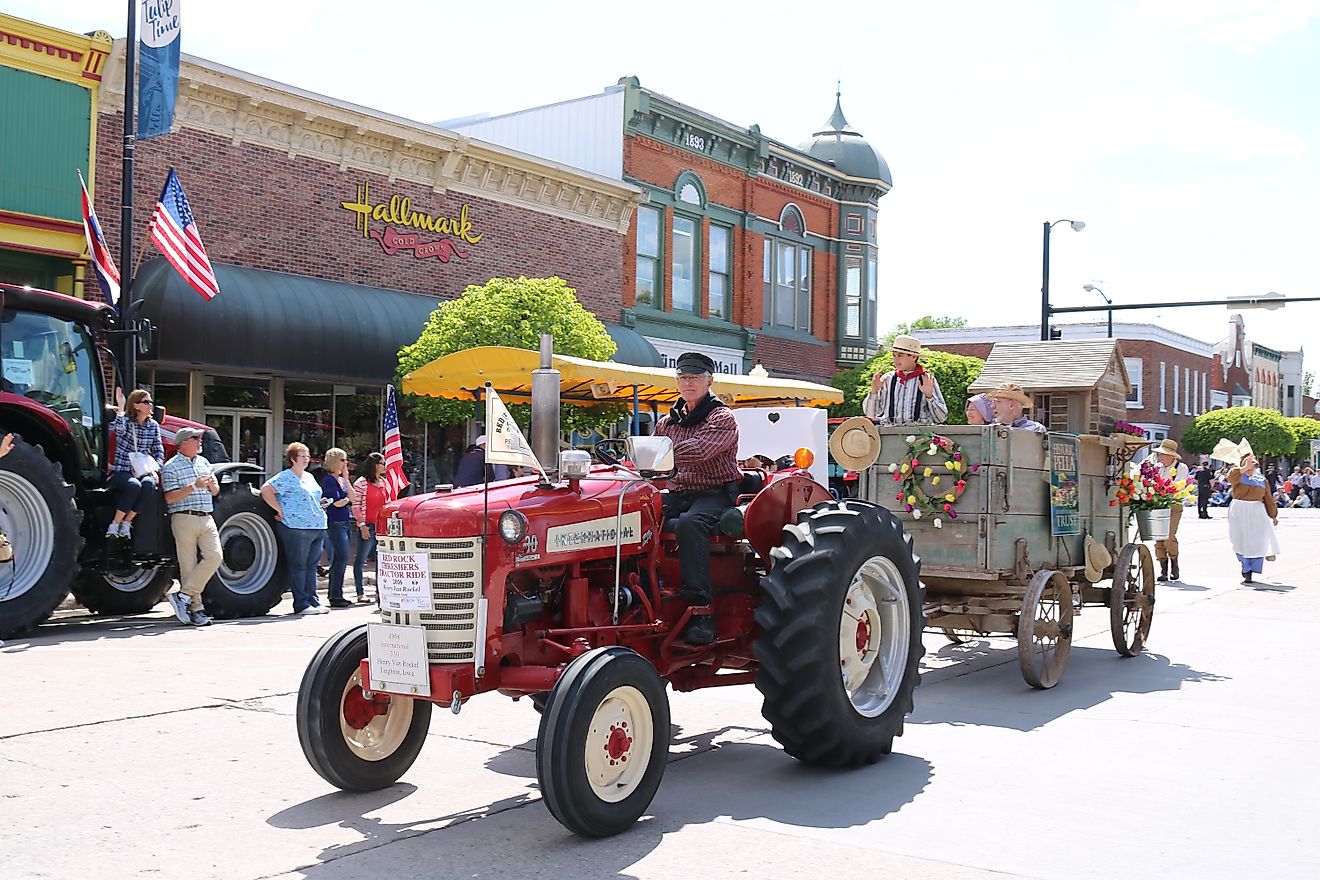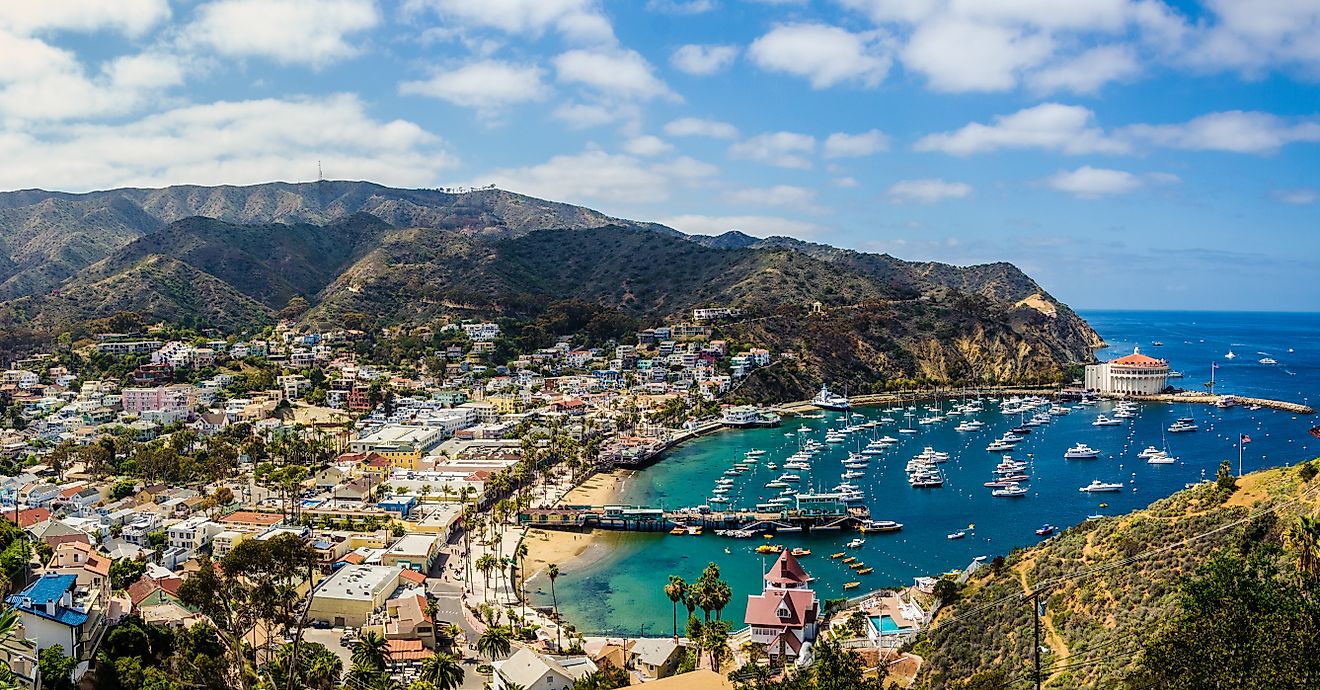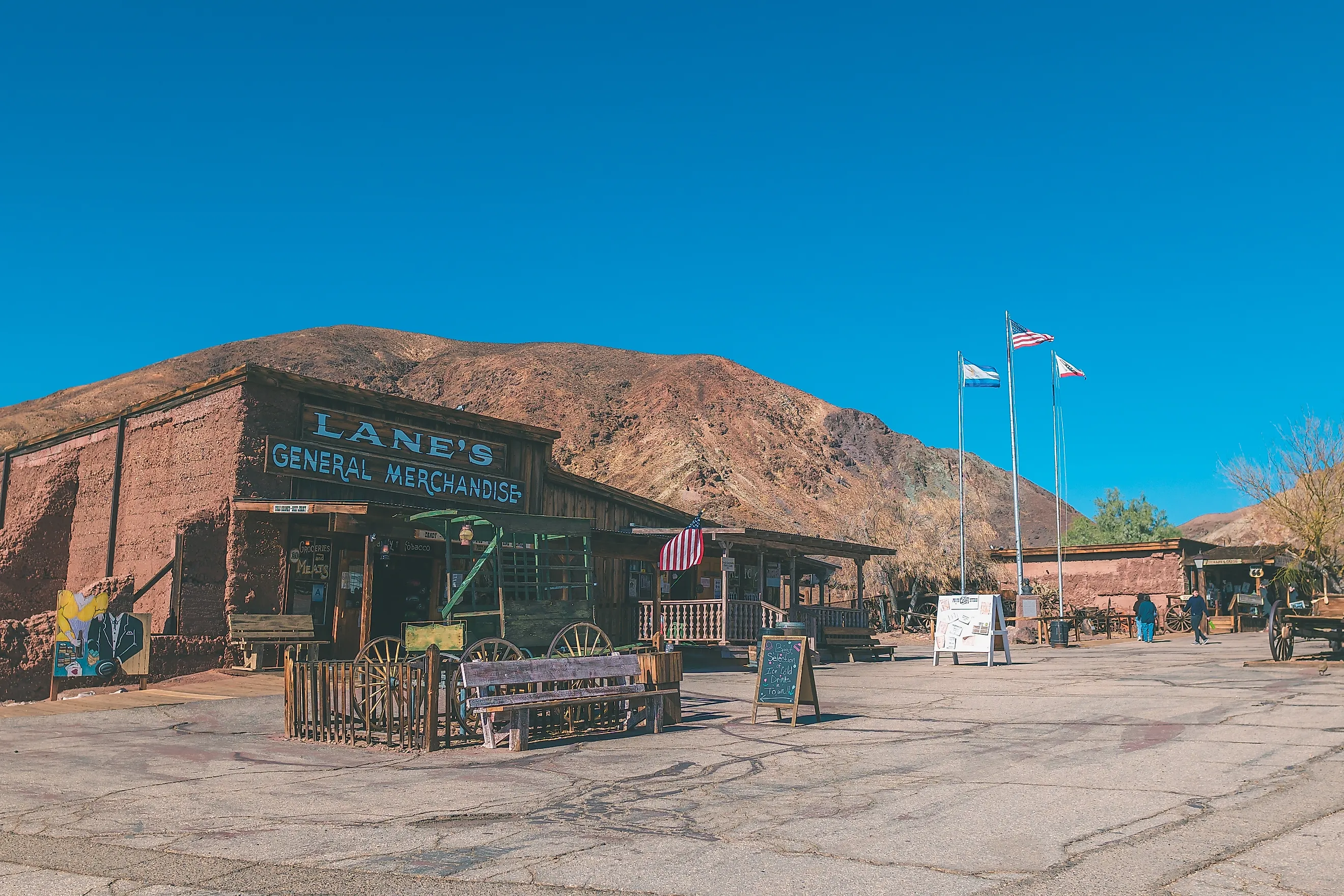
7 Old-Timey General Stores In Southern California
Driving through Southern California is like following a map to the past, where each stop reveals a slice of history in the guise of an old-timey general store. In the Mojave Desert, the Randsburg General Store transports travelers to the Old West, while the Stovepipe Wells General Store is a welcome pitstop in Death Valley. Heading south, the Santa Ysabel General Store offers a glimpse of Gold Rush-era life with its adobe façade and shelves stocked with heirloom goods. Even in Los Angeles, the Canyon Country Store stands as a hidden gem on Laurel Canyon Boulevard. On your next road trip through SoCal, stop at any of these welcome general stores for a cold drink, a sandwich, or a piece of Southern California’s storied history.
Randsburg General Store (Randsburg)
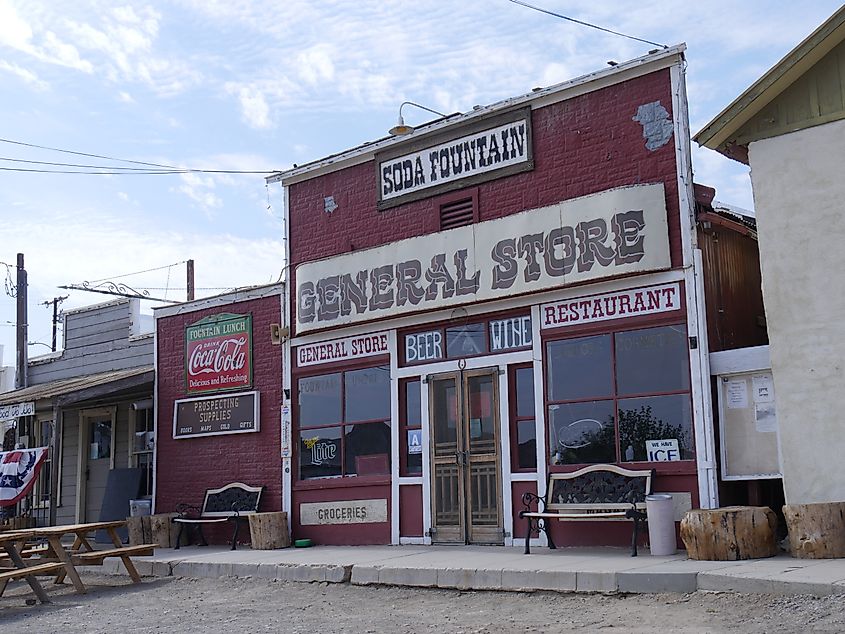
The Randsburg General Store is in the “living ghost town” of Randsburg, a popular destination for roadtrippers driving from Los Angeles to Mammoth Lakes through the Mojave Desert. The store was established in 1896 by Nicholas N. Miller, following the discovery of gold in the nearby Yellow Aster Mine a year earlier. In its first incarnation, it was known as the Randsburg Drug Store. Like many old-time general stores in the early 20th century, the shop changed hands over the years. In 1938, the store was purchased by W.A. Hankammer and renamed the Jones Drug Company, until W.A.’s daughter bought the business in 1949 and became the Randsburg General Store.
Today, the very photogenic Randsburg General Store still preserves the spirit of the Old West, with its false front façade—a hallmark of Old West architecture. This design features a tall, flat front wall that extends above the roofline, creating the illusion of a larger and more imposing structure. This was a common feature in old mining towns, used to convey a sense of prosperity and wealth. A real draw to the historic store is its still-operational 120-year-old soda fountain and generous banana splits. The general store serves an “Egg McMiner Sandwich” for breakfast, a nod to its mining roots. The store still offers a selection of groceries and dry goods.
Stovepipe Wells General Store (Stovepipe Wells Village)
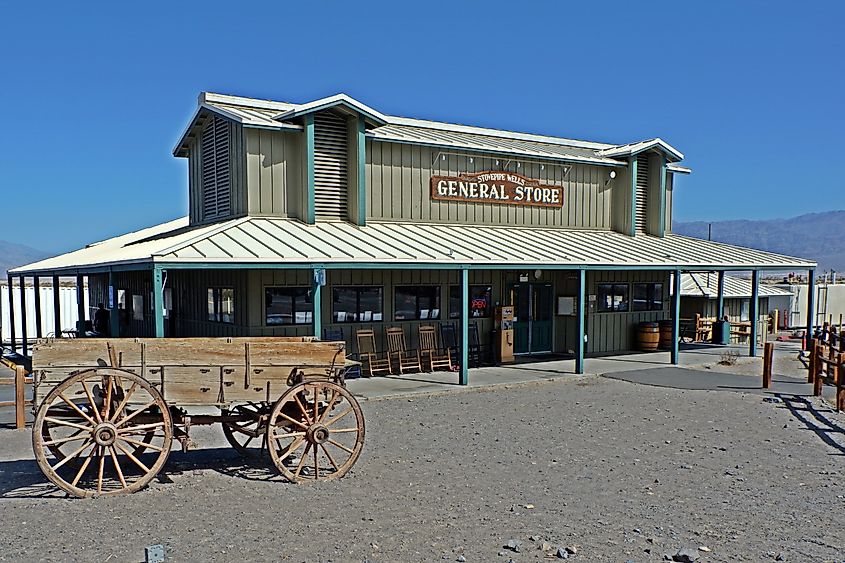
For one hundred years, the Stovepipe Wells General Store has appeared like a welcome mirage for adventurers exploring Death Valley. It is located in Stovepipe Wells Village, a few miles north of Furnace Creek, one of the hottest places on Earth, and another tourist hub for visitors exploring Death Valley National Park. The history of the village and the general store dates back to 1906, when a collection of tents popped up to provide food, drinks, and lodging to travelers between the cities of Rhyolite, Nevada, and Skidoo, California, two nearby ghost towns. Nowadays, the Stovepipe Wells General Store is a desert lifesaver for hikers, long-distance drivers, and traveling nomads looking for grab-and-go meals, cold drinks, car snacks, and another tube of sunscreen.
Santa Ysabel Store (Santa Ysabel)

The Santa Ysabel General Store was built in 1884 and expanded in the late 1890s with a section dedicated to animal feed and farm supplies. It was a vital business for settlers, farmers, and traveling prospectors during the Gold Rush days in rural San Diego. The store’s unique adobe false front façade is the only remaining example of this style of architecture left in the county. Although few details are known about the original owners of the store, it is clear that it served as an important source of food and essential items for folks on the move.
Today, the store still pays tribute to its original roots as a waypoint for travelers in its new dual-purpose incarnation as a Backcountry Visitor Center and General Store. The inside of the store is filled with authentic 19th-century furnishings, taking shoppers back in time as they step through the doors. The new mercantile is an emporium of home and garden wares, heirloom seeds and bulbs, artisanal foodstuffs, featuring gourmet treats such as honey, pickled vegetables, and small-batch preserves, perfect for cultural tourists. The Visitor Center, located inside the iconic building, offers guidebooks, maps, gear, and information for hikers, mountain bikers, birdwatchers, and other nature enthusiasts.
Canyon Country Store (Los Angeles)
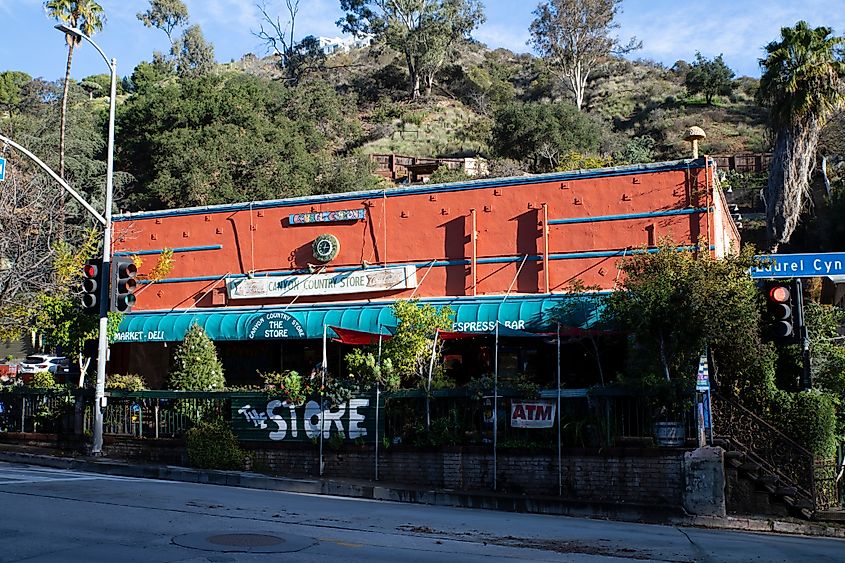
Another old-timey store on a well-worn path is the Canyon Country Store, located on Laurel Canyon Boulevard, a winding road between Hollywood and the San Fernando Valley. The history of the legendary Canyon Country Store dates back to the early 1900s, when a hotel called the Bungalow Lodge burned down in 1929. It was later rebuilt using bricks and stones from a nearby riverbed and transformed into the present-day store. The store was famously immortalized in the song “Love Street” as the “store where the creatures meet,” by The Doors. Not surprisingly, lead singer Jim Morrison lived adjacent to the store in the 1960s, and along with a who’s who of 1960s and 1970s rock and roll music, frequented the shop. Other famous guests include Frank Zappa, Jimi Hendrix, Joni Mitchell, David Bowie, and Cass Elliot from the Mamas and the Papas.
Tommy Bina has owned the cultural landmark since 1982 and preserves its musical past with vintage memorabilia and photographs of its musician patrons. The iconic store sells souvenir T-shirts, deli sandwiches, bagels, snacks, wine, beer, and hard liquor; the endless supply of nostalgia and hazy memories is free.
Rust General Store (Old Town San Diego)
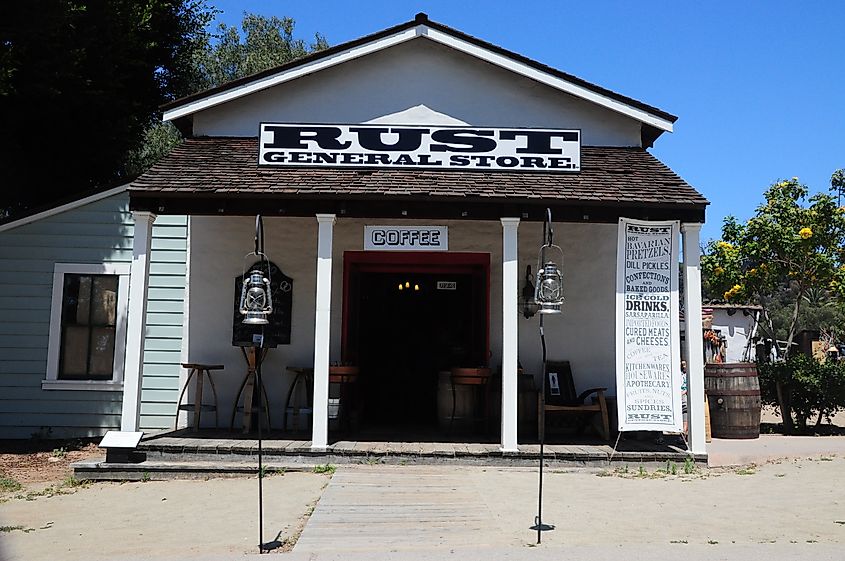
The Rust General Store is a 1860s-inspired general store in Old Town San Diego State Historic Park. The park interprets the town’s history from 1821, when Mexico gained its independence from Spain, and the area known as Alta California, including San Diego, became part of Mexico. Following the Mexican-American War, Alta California was ceded to the United States, but the living-history park recreates life during that significant time in San Diego’s history, with over 20 preserved original buildings dating back to 1821. One notable building in the park is Racine & Laramie, San Diego’s oldest smoke shop.
Other businesses, such as the Rust General Store, are recreated to resemble their original appearance, according to historical records. Today, the shelves in the general store are lined with old-timey merchandise, like bulk teas, soaps, ice-cold sarsaparilla, and a variety of housewares. In addition to being a fun tourist experience, the Rust General Store highlights the significance of general stores in California by showcasing their role as community hubs and essential providers of goods during the state's early settlement and development, particularly for travelers and settlers moving westward in search of new opportunities.
Trabuco General Store (Trabuco Canyon)

The history of the Trabuco General Store is linked with the 1938 establishment of the Trabuco Canyon Post Office in a little grocery owned by Ethel and Grady Glenn, known as the Glenn Market. When Ethel retired as postmaster, Oscar Huffine took over and built a new store at the bottom of Tabuco Oaks Drive, the store now known as the Trabuco General Store. The store changed ownership several times, becoming Otto’s Grocery, the Trabuco Trading Post, and the Emory Store.
Today, the iconic store is still remembered as the place where John Wayne (a legendary actor known for his roles in Western and war films) took his sons for ice cream. The general store still sells ice cream, old-time soda pop, sandwiches, chips, pretzels, and homemade tamales.
Lane’s General Merchandise (Calico Ghost Town)
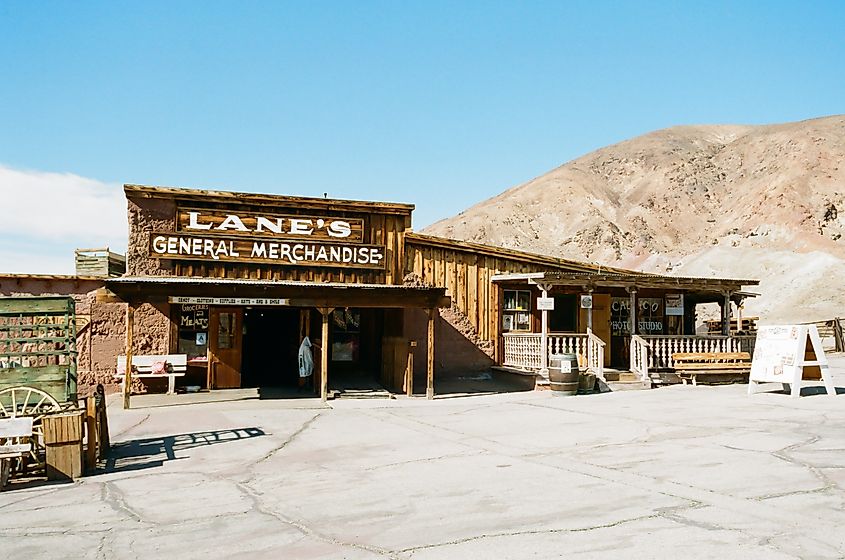
Lane’s General Merchandise is in the Calico Ghost Town, an Old West mining town that has been around since 1881. Like many of the boom-and-bust mining towns of the late 19th century, the town of Calico was abandoned when silver lost its value. Enter Walter Knott (of Knott’s Berry Farm), who bought the town in the 1950s and preserved many of the original buildings. In 2005, Calico became a California Historical Landmark, and then Governor Arnold Schwarzenegger declared it to be “California’s Silver Rush Ghost Town.”
Standing on the site of the original general store, Lane’s was named after residents of the once-bustling mining town, John and Lucy Lane. Inside the store, the shelves are stocked with a mix of historical items and modern-day conveniences, including cowboy hats, RV and camping supplies, souvenirs, and old-fashioned candy such as candy cigarettes, wax bottles, and Charleston Chews.
Concluding Thoughts
Why wait to plot a course to the Trabuco General Store, tucked in the foothills of Orange County, or San Diego’s historic district, where the Rust General Store recreates the feel of the 1860s, complete with old-fashioned sweets and period décor. Finally, there’s nothing like a visit to Lane’s General Merchandise in a kitschy old ghost town to lift a traveler’s spirits at the end of a long drive. Together, these old-timey general stores are some of So Cal’s best-kept hidden hideaways.

